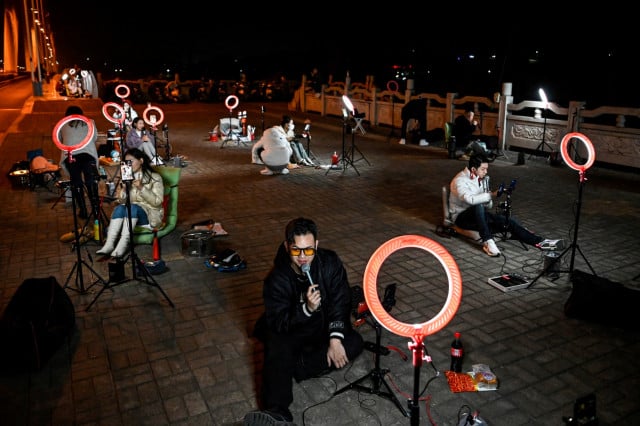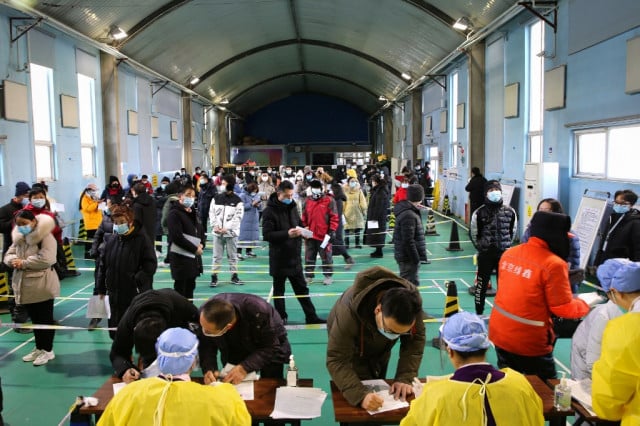USAID Rice Field Fisheries Project

- Chhut Chheana / USAID Wonders of the Mekong
- March 6, 2021 12:59 PM
SIEM REAP--On January 8, 2021, the Wonders of the Mekong project team visited Lahong Village in Sronal Commune, Kralanh District, Siem Reap province to cover a story on rice field fishery management, an effort coordinated by the Trailblazer Cambodia Organization.
Feed the Future Cambodia - Rice Field Fisheries II is a five-year project implemented from 2016 to 2021, by the Trailblazer Cambodia Organization and generously supported by USAID through WorldFish, the Fisheries Administration, and Feed the Future. This project helped support the management of Community Fish Refuges, or ponds that provide safe places for breeding fish during the dry season.
Sun Khun Sen, Rice Field Fisheries Resources project manager of the Trailblazer Cambodia Organization, said that the rice field fisheries project was designed to help communities recover from the loss of fish resources in the rice fields during the dry season.
"There are 44 community refuge ponds in seven districts in Siem Reap," said Sun Khun Sen. All community ponds there have a waterway for fish to migrate out of the pond during the rainy season and return back to the pond in the dry season. In addition, there is also a commission to protect the refuges in cooperation with local authorities.

"We have worked with the local authorities to set a boundary to protect the fish in the ponds, a boundary that spans a distance of 50 to 100 meters from the pond mouth. Within this area, fishing is not permitted," Khun Sen said.
Chet Saot, the head of the Kork Lhong Community Fish Refuge, located in Lhong Village in Sranal Commune, Kralanh District, Siem Reap Province, said that before the Community Fish Refuge was established, there were a lot of illegal fishing activities, especially fisherman using electro fishing gear in the village. But after the Community Fish Refuge and patrolling commission was formed, those illegal activities ceased to exist.
Saot said, “I have observed that the fish production in the rice fields next to the village has increased significantly since the establishment of the Community Fish Refuge. Illegal fishing activities have also ceased, as we now take turns patrolling."
Saot, along with 11 other members, hopes to continue the management of this refuge following the end of funding from various organizations, by relying on the support from local authorities. "I hope there will be support from the local authorities after the sponsorship project is completed because it is beneficial for the whole village,” he said, “Without their support, we cannot continue this work."
Som Ban is a farmer in the village who benefits from the Community Fish Refuge. He smiled looking at his fish catch, full of a variety of fish species and said that after the Community Fish Refuge was established, fish production in the rice fields in his village increased. However, the total number of fish that entered the non-refuge pond this year was less than last year.

"I harvested less fish than last year," he said, “but I still think it’s a lot because the ponds in the rice fields in the village have increased. The villagers see me harvesting a lot of fish every year, so they also dig ponds in their rice fields too. Some families dig one pond, some dig two ponds. Therefore, the fish that move out of the Kork Lhong Community Fish Refuge are divided into those villagers' ponds.”
Establishing the Community Fish Refuge allows for breeding fish to take refuge in the dry season. These fish will then spawn in the pond refuge. When the rainy season returns, the floods carry larvae and juvenile fish out the refuge and into the rice fields and community ponds where they feed and grow. Once the rainy season is over, some adult fish move back to the Community Fish Refuge, while others stay in the rice fields, where they can be harvested by villagers.
Follow Wonders of the Mekong to learn more about the unique Tonle Sap Lake and Mekong ecosystem, and please share this post to raise awareness about the importance of supporting the natural fish populations in the Mekong.















